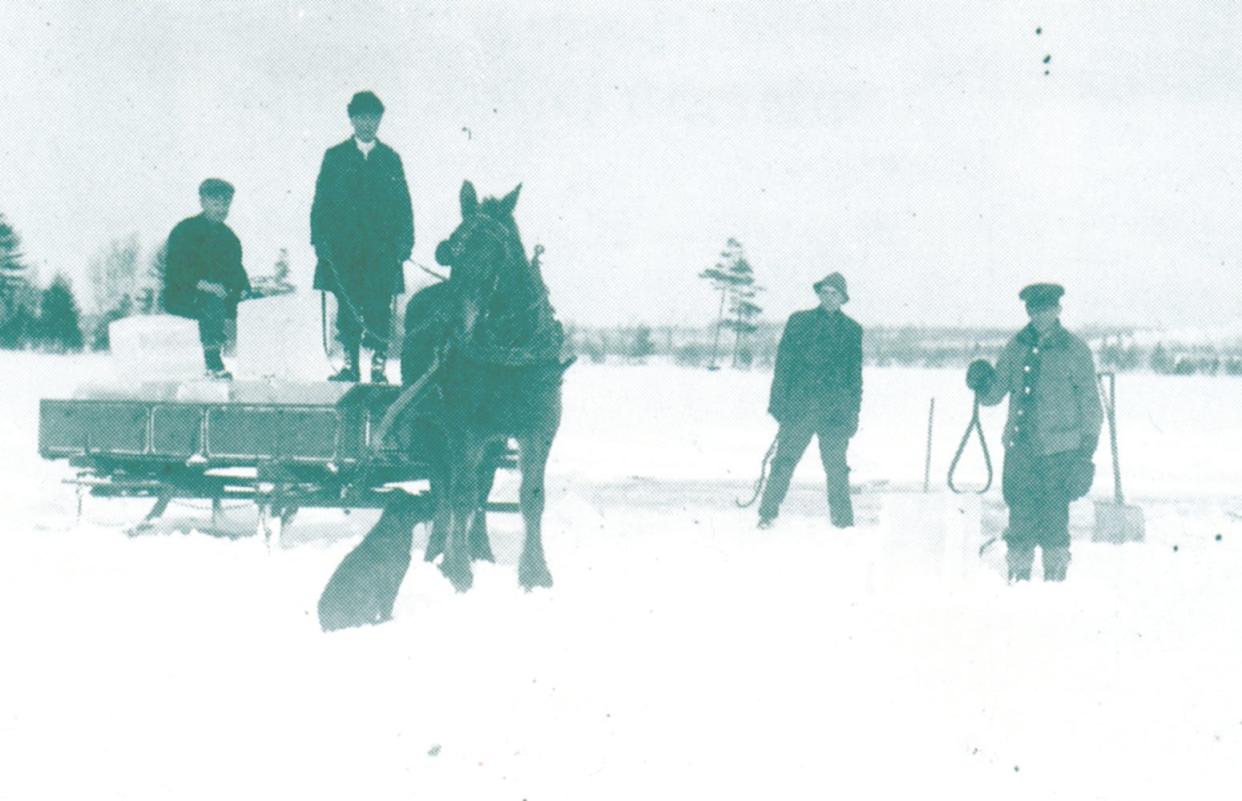Step Back in Time: Pioneer recalls early life in Otsego County

The following early account of Otsego County was written by George A. Menzies in 1950. His parents moved here around 1871, making them among the county’s first settlers. He portrays an interesting picture of early life and many of the difficult times they experienced in an article submitted by Bill Granlund.
My parents, Robert and Margaret Menzies, moved from Evart to Otsego Lake around 1871. Later they lived at the north end of the lake at a settlement named Bagley. The railroad terminated at the south end of the lake and transportation from one end to the other was by dugout canoe. The William Smith family lived in Bagley and Mr. Smith ran a small store. My father was a land-looker, or locator, as they called them at the time.
Father took up a homestead in what would later be known as Corwith Township near Vanderbilt. Mother went to Blissfield in Lenawee County in 1873 and returned in January, 1874. The railroad was built as far as Gaylord and she stayed at a log hotel there. She said she was a bit afraid, as there were no women there, only men.
She took the stage from Gaylord to the new home near Vanderbilt. The new home was a shanty about 12 by 14 feet in size, with a roof of elm bark and a split log floor. I don’t recall the names of anyone in Gaylord at the time except for George Smith, who ran one of the stores. Prior to that time supplies had to be carried in from Otsego Lake.
A stage ran from Otsego Lake to Sault Ste. Marie and later, from Gaylord. The road ran close to my parent’s shanty. Among the first neighbors were the Wades, Trumbley and the Van Werts. The Van Werts ran a half-way house just north of us where the stage changed horses.
Between the stage and those traveling by foot we had some company. There were also numerous Native American callers but they were always civil, more so than some of the white travelers who would sometimes walk right in and demand food. Mother was alone much of the time as Father could be away for several days looking for land. Sometimes Mrs. Wade stayed with her.
I have heard some of the hardships of the early settlers who told of living on beechnut bread. They made their own sugar by shaving maple sugar. The land was heavily forested, with footpaths leading from one homestead to another.
I remember Dr. Nathan Parmater, who lived northwest of Gaylord. When he made house calls he walked or rode by horse. If it was late he would stay the night and proceed on his way the following day.
I remember Elder Neal, who lived at Pettifor Lake. He had white hair and whiskers which was quite a curiosity as there were none around with gray hair; all the early settlers were young. The railroad continued to work its way north from Gaylord. It was a slow process, as it was built by hand and hard work. There was a demand for wood as the railroad used wood to fire the engine. Father and Mr. Sweet and Ben Marlett acquired a wood machine and set it up where Vanderbilt now is. They were paid 75 cents per cord for the best wood, which was piled on the railroad right of way.
Our first means of transportation was by a team of oxen named Duke and Diane. Father was quite progressive so he soon acquired a team of horses. He purchased them from Freeman Wells who had a livery barn in Gaylord.
There was a store and post office at Logan, east of the overhead bridge, six miles north of Gaylord. It was owned by Mr. Lantz and was the first business in the area. Berryville, west of Vanderbilt, was operated by John Berry and Barney Gagnier. The pair had a store, sawmill and gristmill.
The mill was powered with a waterwheel. There was a building which was used as a school and church. There was a store in Vanderbilt owned by H. L. Bonner. The first Sunday school classes were held at the railroad depot.
There were numerous businesses established in Vanderbilt at this time once it was decided the railroad would pass through there rather than Berryville.
Doctors who practiced in Vanderbilt were Peckman, Caster and Woodruff. This would have been around 1880.
I would add that Mother made most of our clothing, even our straw hats. She made her own soap and sugar. Father made our shoes. He had different styles and sizes of shoe lasts. He bought the uppers and wooden pegs. My parents used tallow candles for light and most of our livelihood was produced from the available natural resources around us.
This article originally appeared on The Petoskey News-Review: Step Back in Time: Pioneer recalls early life in Otsego County

